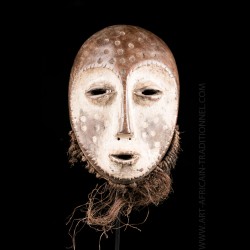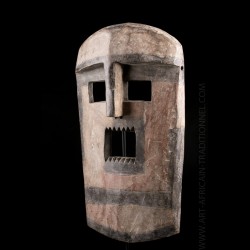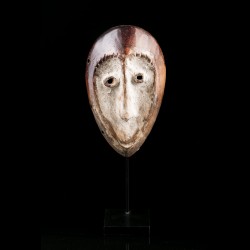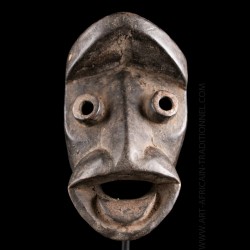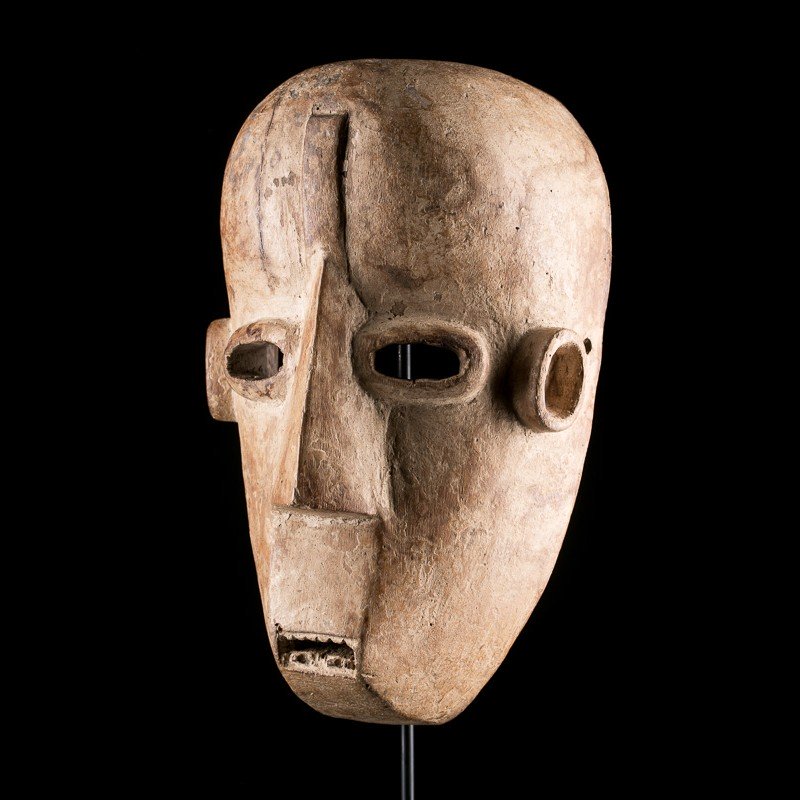


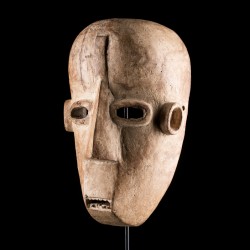













It is not always easy to identify with certainty the traditional African masks of the forest areas of the East and North East of the Democratic Republic of the Congo. However, it is certain that the mask here is from the Nyanga ethnic group who share some cultural and social points with the Lega.
We observe a highly stylized, very cubist treatment. Its patina consists of a layer of white pigment, kaolin, often used in the primitive art of these regions.
This Nyanga mask was used in initiation rituals and circumcision rites.
It was reported in 1965 by a Belgian doctor who explored a vast region of Lake Tanganyika, Rwanda, Burundi and went up to the border with the Republic of Congo in the north.
Data sheet
You might also like

It is not always easy to identify with certainty the traditional African masks of the forest areas of the East and North East of the Democratic Republic of the Congo. However, it is certain that the mask here is from the Nyanga ethnic group who share some cultural and social points with the Lega.
We observe a highly stylized, very cubist treatment. Its patina consists of a layer of white pigment, kaolin, often used in the primitive art of these regions.
This Nyanga mask was used in initiation rituals and circumcision rites.
It was reported in 1965 by a Belgian doctor who explored a vast region of Lake Tanganyika, Rwanda, Burundi and went up to the border with the Republic of Congo in the north.
